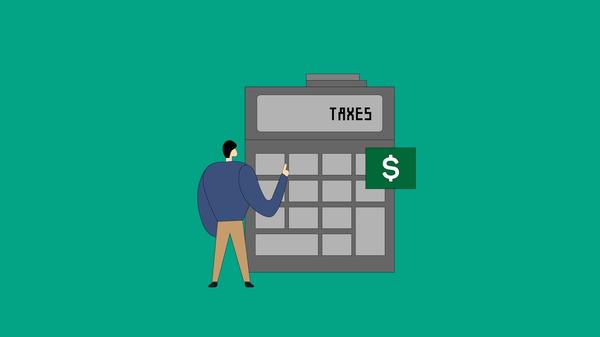You have spent several years saving for your golden years of retirement and reap the benefits of these savings to live on your own terms.
A Registered Retirement Income Fund (RRIF) allows you to gradually withdraw funds for your use today and in the future.
RRIFs can be created by converting your RRSP into a RRIF. In this article, we will explain the differences between RRSPs and RRIFs and
What is the Difference between RRSP and RRIF?
RRIF is essentially an extension of a Registered Retirement Savings Plan (RRSP) offering the same investment options and tax-deferred growth as RRSP.While the RRSP is used to save for retirement, a RRIF is used to systematically draw income during your retirement.
Once your RRSP is converted into a RRIF, you can no longer make contributions to the RRIF and are required to make a minimum annual withdrawal as per federal regulations. Withdrawals from RRIF are taxable and added to your taxable income for the year.
Why Convert to RRIF?
- Converting from RRSP to RRIF will incur no taxes
- Life can be unpredictable and there can be times when you do not wish to be bound by rules to withdraw from your own savings. RRIF offers the flexibility to choose the amount you wish to withdraw and the frequency of withdrawals
- Your investments are not taxed if they remain in your RRIF. Only withdrawals will be taxed
- RRIF offers a variety of investment options such as ETFs, mutual funds, Guaranteed Interest Options (GIOs), etc.
- In the event of a bankruptcy, RRIF offers some creditor protection
When to Convert your RRSP to a RRIF?
All RRSP holdings can be converted to RRIF at any time. However, your RRSP must convert to RRIF or annuity, or paid out in a lump sum by December 31 of the year you turn 71, regardless of whether you need regular income.
It is important to plan early and protect your nest egg and start well before your 71st birthday to avoid the Canadian Tax Authority from de-registering your RRSP. Here are a few simple steps to help you convert your RRSP to RRIF:
Choosing your Financial Institution & Beneficiary
Most people use the same financial institution that holds their RRSP to keep their RRIF, allowing the holder to keep the same investments. For multiple RRSPs, it is wise to consolidate all into a single RRIF.
RRIF will also require you to choose your beneficiary. Your spouse and qualified beneficiaries (children or grandchildren) can receive your RRIF balance tax-free. Other named beneficiaries can receive your RRIF balance but will have to pay taxes.
Completing the RRIF Application
While it is likely your financial institution will prepare your conversion application for you, you may have to fill out a new application yourself. At the time of the application you will have to make several decisions regarding withdrawals and investments which we will investigate shortly.
Planning your Withdrawal Schedule
RRIF requires you to withdraw a minimum amount after your 71st birthday. These withdrawals are treated as income and will be taxed and you have the choice to withdraw monthly, quarterly, semi-annually, or annually. While there is no maximum withdrawal limit it is important to plan and distribute them wisely.
How to Calculate your Minimum Withdrawal?
Once your RRSP is converted to RRIF, the minimum payment is calculated based on when the RRIF was established, you or your spouse’s age and the current amount in RRIF.
Before Age 71:
If you are withdrawing before the age of 71, you can use the following formula to calculate the minimum payment:
{RRIF market value on January 1st of current year} ×{190-age on January 1st of current year}
Thus, if you are 65 with $100,000 in RRIF, your minimum withdrawal would be 100,000 x (1 ÷ (90 – 65)) = $4,000
After Age 71:
After the age of 71, your minimum payment is determined by a percentage of the market value of your RRIF, established by the Canadian government as shown in the table below:
Income Planning in Retirement
While it may be tempting to splurge on your lifetime savings and enjoy your golden years, you must diligently plan your RRIF withdrawals to make sure you do not run out of money. If you are solely dependent on your RRIF withdrawals with no other income sources, consider the following to estimate your withdrawals:
- Budget: Estimate your monthly minimum budget required to go about your essential needs and plan your RRIF withdrawals.
- Travel & Entertainment Expenses: Factor in any travel or entertainment expenses estimating your monthly average.
- Emergencies: Always have an emergency fund handy to prevent yourself from withdrawing all your money from your nest egg.
- Tax Planning: Realize that your withdrawals are taxable, and it is important to time your withdrawals accordingly. Taking early payments or more payments than needed could unnecessarily put you in a higher income bracket and incur heavy taxes.In addition, once your money is withdrawn, you lose the benefit of tax deferred growth.
- TFSA: Any money not required immediately can be contributed to a Tax-Free Savings Account.
- Investment Choices: RRIF offers the flexibility to choose from a variety of investments and the best way to ensure continued growth is to diversify your investments. Invest in short-term as well as long-term funds with varying risk exposure allowing for higher growth potential.
What happens to RRIF after death?
All your RRIF funds become taxable income on the date of your death. However, an exception to this rule is when you have a surviving spouse or have children or grandchildren under the age of 18 who are financially dependent on you at the time of death.
In such a case, your funds can be transferred to an RRSP or RRIF of your spouse without incurring additional taxes. Tax can also be deferred by purchasing annuities to age 18 for children without disabilities.
In conclusion, if you are nearing retirement or already enjoying your retirement years, speak to your advisor to strategically plan and maximize the benefits of RRIF.


